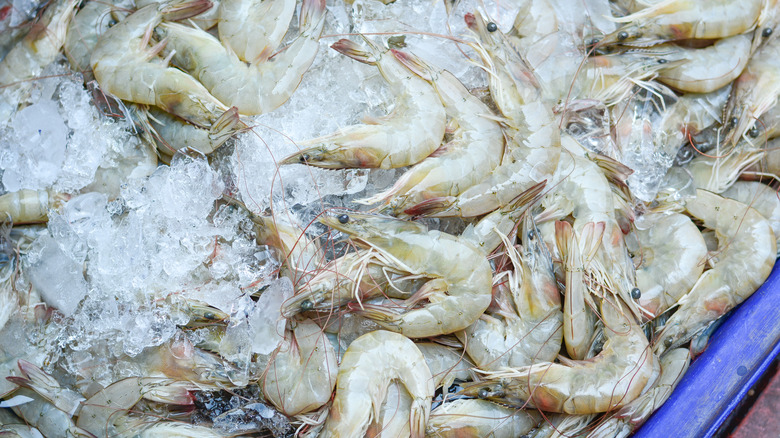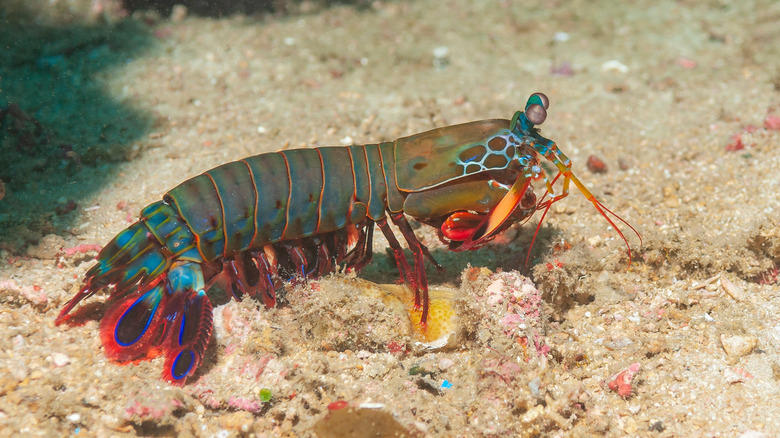Here's What The Numbers On Shrimp Labels Really Mean
Shrimp is one of the most popular foods for a slew of reasons. Consider its pricing, its ease of cooking, its versatile flavor, and the wide variety of dishes in which it's featured. All Recipes notes that it is the best-selling seafood in the US, which certainly doesn't come as a surprise. From fried shrimp to shrimp toast to shrimp cocktail to shrimp pasta, the options are truly endless. Its quick cooking time also makes it a cherished weeknight meal ingredient.
When it comes to buying shrimp, though, it can get tricky: frozen vs. fresh, peeled vs. peel-on, head-on vs head-off — purchasing the right kind for you isn't always an easy task. There are also different varieties or species of shrimp. And let's not forget pre-cooked. But one of the biggest questions seems to be in regard to numbers: What does the designation of 16/20 or 36/40 mean when it's printed on shrimp packaging? We're here to answer your questions.
How does shrimp sizing work?
All Recipes notes that these numbers directly correlate to the size of the shrimp. They represent a range of how many shrimp will come in a pound. Furthermore, this means that the larger the number, the smaller the actual size of the individual shrimp. For example, 16/20 means that there will be between 16-20 shrimp per pound in that package.
The Spruce Eats says that there are five primary shrimp size categories, including colossal, jumbo, large, medium, and small. They range from about 15 shrimp per pound (colossal) to anywhere from 51-60 (small). Of course, the size is also directly connected to the preparation of the shrimp and possibly the recipe you're using, as well as the shrimp's price point. This can also vary store-to-store or vendor-to-vendor. The Kitchn also points out that shrimp's weight is calculated with the shell on, but head off. (Don't forget to de-vein.)
As for those shells: Be sure to save them. They can be utilized to make an amazing stock. You're in for a treat.

